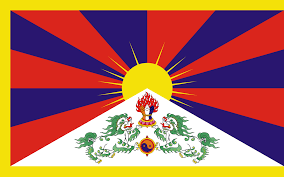Language/Tibetan/Grammar/Pronouns
Hi Tibetan learners! 😊
In this lesson, we will learn about pronouns in Tibetan language. Pronouns are an essential part of the sentence and refer to nouns that have already been mentioned, or are about to be mentioned. Let's get started!
Consider broadening your understanding by checking out these related lessons: Conditional Mood, Plurals, How to Use Be & How to Use Have.
What are Pronouns in Tibetan?[edit | edit source]
In Tibetan, pronouns are words that replace nouns. They can refer to:
- People: ཁོང་གི་སྐད་རིགས་དང་གསང་རབ་རང་དགོས་པོ་ (kong gi skey rig, dang sang rab rang dgo po). (my friend, he/she is a doctor.) - Places: ག་སར་ (Gasa) ནག་པ་ཆེ་བ་ཡོང་བརྩེ་གླེང་པར་ཚོ་རིག་ (nga pa che ba yong brtse gleng par tso rig). (I am going to a beautiful place called Gasa.)
Like English, there are several types of pronouns in Tibetan. In this lesson, we will learn the most commonly used ones.
Personal Pronouns[edit | edit source]
Personal pronouns in Tibetan can be classified as first person, second person, and third person pronouns. Here is a table that shows the personal pronouns in Tibetan:
| Singular | Plural | |
|---|---|---|
| First Person (ཁོང་གི་མིང་ཚིག) | ང་ (nga) | ངེས་པར་ (nges par) |
| Second Person (ཁོང་གི་རྩོམ་ཚིག) | ཁྱེད་ (kye) | ཁྱེད་ཀྱི་ཚིག (kyed kyi tshig) |
| Third Person (ཁོང་གི་སྐད་རིགས་) | ཁ་སྐད་ (kha-skey) | ཁ་སྐད་ཚིག (kha-skey tshig) |
Here are some examples of personal pronouns:
- ཁྱེད་ཀྱི་ཨ་མིག་རིག་ཚུ་ཆེ་ (kyed kyi a mig rig tshu che) - This is your book.
- ང་དང་གཅིག་དུ་ཆོས་པར་བྱེད་ (nga dang gcig du chos par byed) - I and you should work together.
- ཁ་ཏུ་བཏང་རིགས་རང་དགོས་པོར་བྱེད་ (kha-tu btsang-rig rang-dgopor byed) - He loves his country.
We use personal pronouns to refer to people when we already have mentioned them before. We use them to avoid repeating the noun.
Demonstrative Pronouns[edit | edit source]
Demonstrative pronouns are used to point to specific things or people. There are three types of demonstrative pronouns in Tibetan:
- ཚེ་དཔག་ (tse dpag) - This (nearby)
- དེ་བཞིན་ (de bzhin) - That (not immediately near)
- ནི་བཞིན་ (ni bzhin) - That (far away)
Here are some examples of demonstrative pronouns:
- ཚེ་དཔག་ལ་སྡོད་པས་སྟོན་པ་ (tse dpag-la sDop-pa ste ston-pa) - (This is the place where) the ceremony is held.
- དེ་བཞིའོ་དང་བྱེད་པ་ (de bzhio dang byed-pa) - (That person) is intelligent and capable.
- ནི་བཞིན་ལ་ཉིན་ཐོ་ (ni-bzhin-la nyin-tho) - (That) looks like a thief.
Interrogative Pronouns[edit | edit source]
Interrogative pronouns are used to ask questions in Tibetan. Here are some of them:
| Pronouns | Usage |
|---|---|
| འ་རང་ (a-rang) | What |
| སོ་སོར་ (so-sor) | Who |
| ས་གོ་མིན་པས་སྦེམས་ཚིག (sa-go-min-pa-sbemtsig) | Which |
Here are some examples of interrogative pronouns:
- སེམས་བཅད་ནི་འ་རང་གི་རང་རེད་པས་རང་རེད་གནང་། (sem-ced ni a-rang-gi rang-redpas rang-red gnang?) - What is the meaning of this sentence?
- ཆོས་དང་ཁྱེད་ཀྱིས་གཅེས་པར་བྱེད་དགོས་པ་(chos dang kye-kyi gcig-par byed-dgop) - What do you mean by Buddhism?
- སོ་སོར་དྲོད་པ་(so-sor dro-pa) - Who is the thief?
Indefinite Pronouns[edit | edit source]
Indefinite pronouns are used to refer to non-specific people, places, or things. Here are some examples:
- མི་འདུག་ (mi 'dug) - Someone
- གདམ་དུ་ (gdam-du) - All
- མ་ལག་ (ma-lag) - Nobody
Here are some examples of indefinite pronouns:
- འདས་གཞུར་གྱུར་སྒྲིག་བྱེད་ལ་མི་འདུག་ཡི་གེ་རིག་ ( 'das-gzhur gyur sgrig byed-la mi-'dug-yi ge-rig) - No one knows the answer to the logical puzzle.
- ལོ་མིན་ཕམ་པའི་ཡོངས་མེད་སྙན་དགོས་སོང་པ་ (lo-min pham-pa'i yongs-med snyan-dgosthongs-pa) - Nobody wants to be poor.
Dialogue[edit | edit source]
Let's see some examples of pronouns being used in a dialogue:
- Person 1: ང་ཁྱེད་ཀྱི་ཁང་།( nga kye-kyi khang? ) - Where is mine?
- Person 2: ཁ་སྐད་ཀྱི་ཁང་།(kha-skey kyi khang?) - Where is his/hers?
- Person 1: སྐད་རིགས་གཉིས་ཀྱི་མིང་ཚིག་གི་ཆོས་བྱེད་པ་(skey rig-nyi-kyi mings-tshig-gyi cho-byed-pa) - Explain the meaning of the word in English.
- Person 2: དེ་ཡིན་ནམ་མཁའ་འོང་།(de-yin nam-mkha'-ong) - That means sky.
Tips to Improve Pronoun Usage[edit | edit source]
In Tibetan, it is important to get the right pronouns. Here are some tips to improve your usage of pronouns in Tibetan:
1. Practice daily, especially with native speakers. You can use Find native speakers and ask them any questions through Polyglot Club. 2. Learn new pronouns and use them as much as possible. 3. Improving your basic Tibetan Grammar skills can also help you with pronouns. 4. Read texts in Tibetan (with transliteration and translations).
Conclusion[edit | edit source]
We hope that this lesson has helped you to understand the use of pronouns in Tibetan. If you have any questions, please ask them in the comments section below.
➡ Feel free to edit this wiki page if you think it can be improved. 😎
Sources[edit | edit source]
Upon wrapping up this lesson, take a look at these related pages: Give your Opinion, Gender, Adjectives & Questions.
Other Lessons[edit | edit source]
- Adjectives
- Questions
- Give your Opinion
- How to Use Have
- Gender
- Plurals
- How to Use Be
- Conditional Mood

